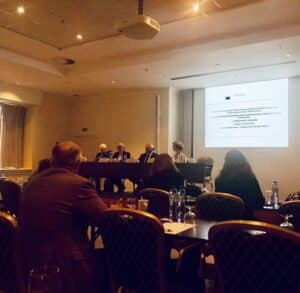In December 2020, the European Commission published the report on the effectiveness of the implementation of the European emergency number 112, which was submitted to the European Parliament and to the Council, in line with the European Electronic Communications Code. The Commission has been gathering data on the implementation of the 112 number since 2007. This report is the first one implementing the obligation, set out by the Code, to submit the report to the European Parliament and the Council. The Commission will report to the European Parliament and the Council every two years.
The European Commission concludes that end-users with disabilities do not benefit from fully equivalent means of access to emergency services, especially when roaming. When these end-users are not able to place a call to ‘112’, they have to rely on nationally fragmented solutions. This state of affairs is in contrast with the availability of the harmonised single European emergency number ‘112’ for other end-users and represents a significant void in the accessibility of emergency services. Roaming end-users do not always have access to emergency services ensured in the visited Member States and they are not informed on the available means of access.
The European Commission highlights that Member States have to transpose and implement the necessary measures to comply with the requirements of the EECC and in particular Article 109 on emergency communications and the single European emergency number. All end-users, including end-users with disabilities, no matter where in the European Union, should be able to effectively request and receive help from emergency services
To make that possible, Member States will have to deploy accurate caller location for all end-users and equivalent means of access for end-users with disabilities, including those travelling to another EU Member State.
Member States should upgrade their PSAP systems to ensure that these are fit for the digital age. Legacy PSAP systems are not yet able to handle and process emergency communications that are truly accessible for end-users with disabilities. The deployment of state of the art real time text and total conversation necessitates the upgrade of the PSAP system to an all-IP network of interconnected PSAPs that could adequately route and process IP-based emergency communications.
Do you want to engage with an advocacy to make this happen? EUD has developed a toolkit which explains where to start: https://www.www.eud.eu/news/training/eud-toolkit-european-electronic-communications-code/
Here you can find an overview of the alternative means of access for end-users with disabilities currently deployed in the EU: https://ec.europa.eu/digital-single-market/en/news/2020-report-effectiveness-implementation-european-emergency-number-112












